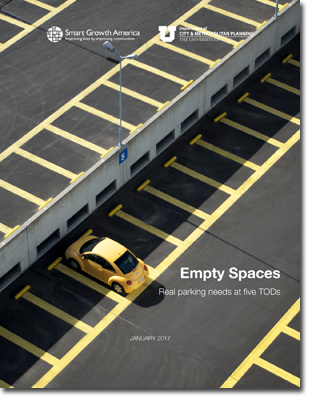Introducing “Empty Spaces,” new research about parking at five TODs
 The land near transit stations is a valuable commodity. Hundreds or thousands of people travel to and through these places each day, and decisions about what to do with this land have implications for local economies, transit ridership, residents’ access to opportunity, and overall quality of life for everyone in a community.
The land near transit stations is a valuable commodity. Hundreds or thousands of people travel to and through these places each day, and decisions about what to do with this land have implications for local economies, transit ridership, residents’ access to opportunity, and overall quality of life for everyone in a community.
Many communities choose to dedicate at least some of that land for parking. The question is, how much? Standard engineering guidelines are designed for mostly isolated suburban land uses—not walkable, urban places served by transit. But few alternative guidelines for engineers exist.
Empty Spaces: Real parking needs at five TODs, released today, set out to determine how much less parking is required at transit-oriented developments (TODs) and how many fewer vehicle trips are generated than standard industry estimates.








